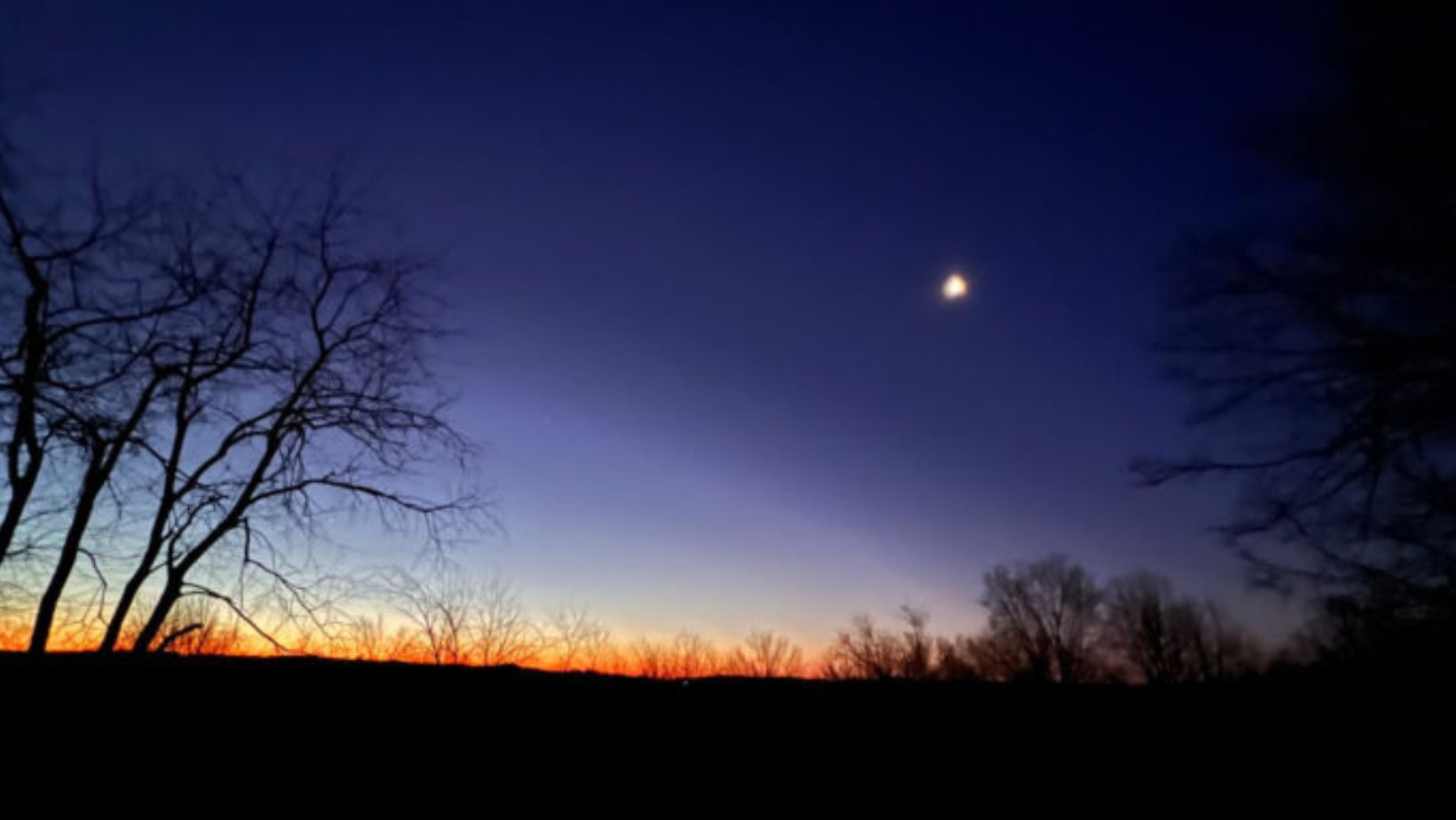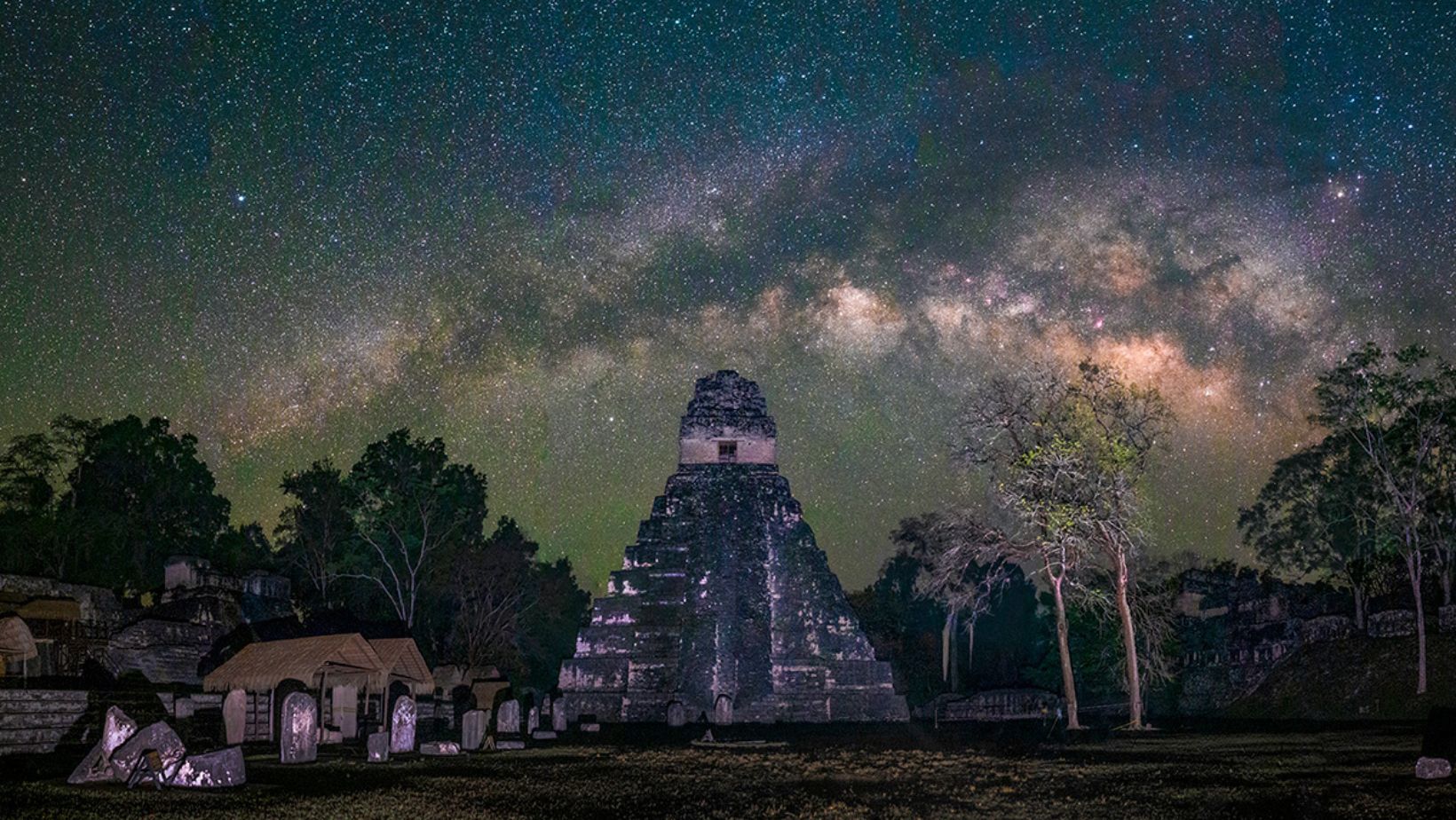Maya Astronomy was central to Maya life. The stars guided their daily routines, agricultural practices, and religious ceremonies. The Maya were keen observers of the night sky, meticulously tracking celestial events. They used this knowledge to create calendars that dictated when to plant crops and hold festivals.
Understanding the cosmos was not just about science; it was a spiritual journey. The stars were believed to hold deep meanings and connections to the gods. This blog will explore how astronomy shaped the Maya civilization and influenced their culture in profound ways.
The Maya Astronomy and Calendar System: A Celestial Framework

The Maya calendar system is intricate, comprising two main cycles: the Tzolk’in and the Haab’. The Tzolk’in consists of 260 days, combining 20 named days with 13 numbers. This calendar was primarily used for ceremonial events and personal affairs.
The Haab’ is a solar calendar with 365 days, divided into 18 months of 20 days each, plus a short month of 5 days. Together, these calendars form a larger cycle called the Calendar Round, lasting 52 years.
The Maya closely linked their calendars to celestial events, observing the movements of the sun, moon, and planets. For example, the appearance of the Pleiades constellation signaled important agricultural activities, such as planting maize. This deep connection between celestial observations and farming ensured that the Maya could maximize their crop yields and maintain their society. Understanding this calendar system reveals how the Maya harmonized their lives with the cosmos.
Celestial Observatories: Structures Built for the Stars and Maya Astronomy
The Maya constructed impressive observatories to study celestial bodies. One notable example is El Caracol in Chichen Itza. This circular structure features a unique design with windows aligned to key astronomical events.
El Caracol was primarily used to observe the movements of the planet Venus. The openings in its walls allowed Maya astronomers to track the planet’s cycles and predict important dates for agricultural and ceremonial purposes.
These observatories often had thatched roofs and were strategically placed on elevated terrain. This location provided an unobstructed view of the night sky. Other observatories, like the one at Uxmal, exhibited similar architectural brilliance.
Overall, these celestial observatories played a crucial role in Maya society. They helped the Maya refine their calendar systems and deepen their understanding of the cosmos. By observing the stars, the Maya connected their agricultural practices and religious rituals to the rhythms of the universe.
Tracking the Cosmos: Maya Astronomy and Methods of Observation
The Maya developed advanced tools and techniques for observing celestial bodies. They used simple instruments like gnomons, which are vertical poles that cast shadows. By measuring these shadows, the Maya could determine the position of the sun and track seasonal changes.
Additionally, they constructed observatories to enhance their observations. These structures were often built with windows aligned to key celestial events. This alignment allowed the Maya to monitor the movements of stars and planets with great precision.
The Maya also kept detailed records of their observations. They created complex charts and codices to document celestial cycles and predict events. Such precision was crucial for their agricultural practices, as it dictated when to plant and harvest crops.
Accurate measurements were essential for coordinating religious ceremonies as well. By aligning rituals with celestial events, the Maya reinforced their cultural beliefs. Their methods of tracking the cosmos showcase their deep understanding of astronomy and its significance in daily life.
The Role of Venus: The Morning Star in Maya Mythology

Venus, known as the Morning Star, held significant importance in Maya mythology and culture. The Maya believed that Venus was associated with various deities and played a crucial role in their religious practices. Observations of Venus’s cycles informed the timing of important rituals and ceremonies, especially those related to warfare and agriculture.
The cycles of Venus were meticulously tracked by Maya astronomers. They noted that the planet appeared as the Morning Star and the Evening Star, signaling different phases. This led to the belief that Venus’s appearances were omens for upcoming events. For instance, the rise of Venus often coincided with war, as its visibility was seen as a signal for the gods’ favor in battle.
Maya rulers used these celestial events to justify military actions. They consulted their calendars to ensure that their campaigns aligned with Venus’s cycles. This connection reinforced the idea that celestial bodies had direct influence over human affairs. Ultimately, the role of Venus in Maya mythology highlights the intricate relationship between astronomy and daily life in ancient Maya society.
Eclipses and Their Impact on Maya Society: Maya Astronomy
Eclipses held significant meaning in Maya society. Both solar and lunar eclipses were seen as powerful celestial events, often interpreted as omens. The Maya believed that these occurrences could influence their gods’ moods and intentions, affecting daily life and agricultural cycles.
During an eclipse, priests would observe and record the event meticulously. They used these observations to advise rulers on important decisions. For instance, an eclipse could be seen as a sign to delay military actions or agricultural planting. This careful monitoring demonstrated the connection between astronomy and governance.
Eclipses also played a role in religious rituals. Special ceremonies were often conducted to appease the gods during these events. The Maya sought to mitigate any perceived threats that an eclipse might pose. Overall, the interpretation of eclipses was vital to Maya decision-making, highlighting their deep respect for celestial phenomena.
Star Constellations: Mapping the Night Sky
The Maya had a profound understanding of the night sky, mapping numerous constellations. Some key constellations included the Turtle, the Jaguar, and the Scorpion. Each of these patterns played a vital role in their mythology and daily life, serving as guides for navigation and agricultural practices.
Navigating through the dense jungles of Mesoamerica was challenging. The Maya used constellations to orient themselves and find their way during nighttime travels. This knowledge was crucial for traders and explorers, ensuring they could reach their destinations safely.
In addition to navigation, constellations were woven into Maya mythology. Stories and legends often revolved around the stars, explaining their significance in the cosmos. For instance, the appearance of certain constellations marked specific times for planting and harvesting crops.
Overall, the Maya’s detailed mapping of the night sky showcases their advanced astronomical knowledge. This understanding not only helped them navigate their world but also enriched their cultural and spiritual lives.
Maya Cosmology: The Universe’s Structure and Meaning
The Maya had a unique cosmology that shaped their understanding of the universe. They viewed the cosmos as a multi-layered structure consisting of the heavens, the earth, and the underworld. Each layer played a significant role in their religious beliefs and daily life. The celestial realm was seen as a source of divine power and influence.
Celestial bodies, such as the sun, moon, and stars, were regarded as powerful deities. The sun was often associated with the god Kinich Ahau, representing life and growth. The moon was linked to the goddess Ix Chel, embodying fertility and healing. These celestial entities were believed to impact agricultural cycles, weather patterns, and human affairs.
The Maya also believed in the cyclical nature of time and events. They thought that celestial movements affected the fate of humanity. Therefore, understanding the cosmos was crucial for making decisions about rituals, agriculture, and governance. Their deep connection to the universe helped them navigate the complexities of life and maintain harmony within their society.
Agriculture and the Stars: Timing Planting and Harvests
The Maya civilization relied heavily on celestial observations to guide their agricultural practices. They believed that the stars and planets influenced the growth of crops. By carefully tracking celestial movements, the Maya could determine the best times to plant and harvest. This connection ensured their agricultural success and food security.
Key stars, such as the Pleiades and Sirius, marked critical points in the farming calendar. For example, the appearance of the Pleiades signaled the time to begin planting maize. The position of the sun also indicated seasonal changes, helping farmers anticipate the rainy season. This astronomical knowledge was crucial for maximizing crop yields.
Farmers shared this information through oral traditions and communal rituals. They celebrated the planting and harvesting cycles, reinforcing the connection between their agricultural practices and celestial events. By understanding the stars, the Maya created a sustainable farming system that allowed them to thrive in their environment. This deep relationship with the cosmos remains a testament to their sophisticated understanding of nature and its cycles.
Legacy of Maya Astronomy: Influence on Future Generations

The astronomical knowledge of the Maya continues to influence future generations. Their intricate calendar systems and celestial observations laid the groundwork for understanding time and seasons. Modern researchers have recognized the precision of the Maya calendar, particularly in its ability to track solar and lunar cycles.
Today, scholars are revisiting ancient texts and artifacts to uncover lost astronomical knowledge. Discoveries about the Maya’s sophisticated understanding of celestial events have garnered attention in both academic and cultural spheres. For example, the Maya predicted eclipses with remarkable accuracy, demonstrating advanced mathematical skills.
Maya astronomy also holds relevance in modern astronomy and archaeology. Techniques used by the Maya, such as the alignment of structures with celestial bodies, inspire contemporary architectural practices. Moreover, indigenous communities still celebrate their connection to the stars, keeping ancient traditions alive.
The legacy of Maya astronomy showcases a civilization deeply attuned to the cosmos. Their insights continue to inspire curiosity and respect for the natural world, highlighting the importance of astronomy in shaping cultural identity and understanding our place in the universe.
Conclusion: Maya Astronomy
The relationship between the Maya and the cosmos was profound and multi-faceted. Their intricate understanding of celestial movements shaped agricultural practices, religious rituals, and social structures. The Maya viewed the stars not just as celestial bodies but as integral to their identity and existence.
Their astronomical practices provided guidance for daily life, influencing everything from planting cycles to the timing of important ceremonies. This deep connection to the cosmos illustrates how the stars served as a guiding light, shaping not only their civilization but also the cultural legacy that continues to resonate today.
FAQs
What were the primary tools used by the Maya for astronomical observations?
The Maya used a range of tools for celestial observations, including simple instruments like shadow sticks and plumb bobs to measure angles. They also built large observatories, such as El Caracol, which allowed them to track celestial bodies accurately.
How did the Maya interpret the movement of planets?
The Maya closely observed planetary movements, particularly those of Venus. They associated its cycles with war and agriculture, integrating these observations into their religious practices and calendrical systems.
What role did the stars play in Maya mythology?
The stars were seen as deities and held significant mythological importance. Many constellations were associated with stories and legends, influencing rituals and ceremonies throughout Maya society.
Did the Maya have a unique understanding of eclipses?
Yes, the Maya had a sophisticated understanding of solar and lunar eclipses. They interpreted these events as significant omens, often using them to inform political decisions or religious practices.
How did Maya astronomy influence their architecture?
Maya astronomy significantly influenced their architectural designs, with many temples and pyramids aligned with celestial events. This alignment reflected their beliefs and understanding of the cosmos, showcasing their commitment to astronomical accuracy in their constructions.

